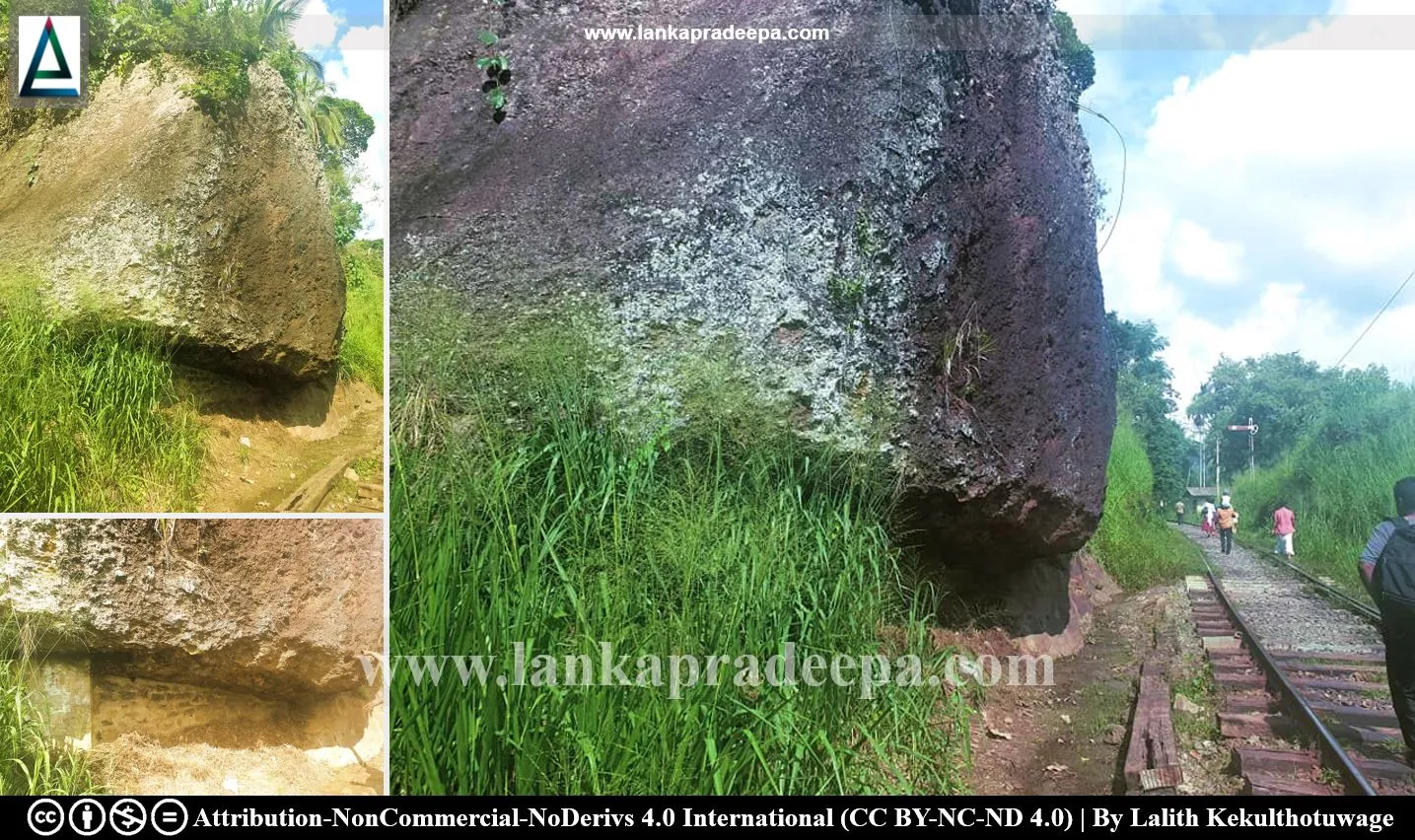 |
| Figure 1: The Sangharaja cave and the railway line |
.
Sangharaja Lena (Sinhala: සංඝරාජ ලෙන) is a small cave located near the Ihalakotte Railway Station in Kagalle District, Sri Lanka. Its history is related to the erudite Buddhist monk Weliwita Sri Saranankara Thera (1698-1778 A.D.) who is considered the pioneer of the revival of Buddhism on the island in the 18th century. He was also the last Sangharaja of Sri Lanka.
Weliwita Sri Saranankara Thera was instrumental in re-establishing the Upasampada (higher ordination) in the country in 1753 with the support of King Kirti Sri Rajasingha (1747-1782 A.D.) of Kandy after the religion declined in the 17th and 18th centuries. He was born in Kudugalahena in Weliwita Ihalagama village (read article: Weliwita Sanghikaramaya) and in the latter part of his childhood, he entered the Buddhist order as a Samanera (novice monk) at the Suriyagoda Raja Maha Viharaya in Kandy by the name Weliwita Saranankara (Abeyawardana, 2004). His mentor, Suriyagoda Rajaguru Thera exercised considerable influence within the Kandyan Kingdom and had the patronage of Sri Viraparakrama Narendrasinha (1707-1739 A.D.) of Kandy, the last Sinhala ruler in the country.
However, Suriyagoda Rajaguru Thera was later charged with treason by the king and executed. Thus young Weliwita Saranankara Samanera, in order to continue his monastic studies, decided to learn under a lay named Leuke Ralahamy who also had been imprisoned by the king in a village close to Alagalla Mountain Range. He took up residence in a cave in Alagalla near Kadugannwa and devoted his early years to learning under Lewke Ralahamy. This cave used by Weliwita Saranankara Samanera started to be known among the people as Sangharaja Lena (Sangharaja Cave) as he was later appointed as the Sangharaja of Sri Lanka by King Kirti Sri Rajasingha. Sangharaja is considered the highest office conferred on a monk in a Theravada Buddhist country.
References
1) Abeyawardana, H.A.P., 2004. Heritage of Kandurata: Major natural, cultural and historic sites. Colombo: The Central Bank of Sri Lanka. pp.90,94-95.
Attribution
#) LankaPradeepa.com extends its gratitude to Lalith Kekulthotuwage for providing the necessary photographs required for this article. All the photos are published here with the permission of the author.
Explore Other Nearby Attractions
Location Map (Google)
This page was last updated on 24 November 2023

